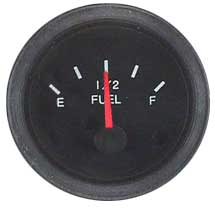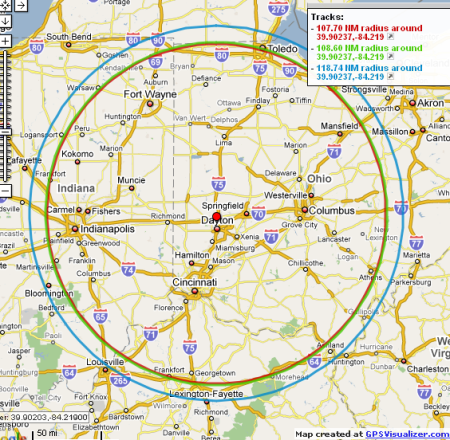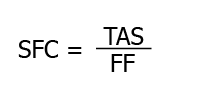What is Specific Range?

Do you know your airplane's MPG?
“What is meant by the term ‘specific range’?”
This is the question that I asked David Wyndam of Conklin and de Decker after coming across this term while looking at some aircraft comparison performance tables.
The performance tables listed the specific range for various airplanes in both long range and high speed cruise. For instance, the specific range for a Cirrus SR22 was listed as 2.051 for long range cruise and 1.810 for high speed cruise. But what exactly do those numbers mean and what formula was used to devise those values ?
Specific range is the distance an aircraft travels per unit of fuel consumed. Typically this is expressed in nautical mile per pound of fuel. So for instance, the Cirrus SR22 has a high speed cruise specific range of 1.890. That means for every pound of fuel used, the Cirrus SR22 could fly 1.890 nautical miles. Here is another example. The Beechcraft Premier that I fly has a SFC of 0.557 NM/lb. If 1 lb will take me 0.557 NM that means with 1,000 lbs of fuel the Premier can fly 557 NM. This is the aviation equivalent of MPG.
One purpose of SFC is to help determine the efficiency of an aircraft. This can be used when comparing aircraft for purchase. Fuel efficiency is important for knowing what your direct operating costs will be as fuel is one of the largest components of DOC.
Now we don’t typically use pounds for the fuel unit in piston aircraft, we use gallons. We also know that 1 gallon of 100LL weighs approximately 6 pounds. So if the Cirrus can go 1.890 nautical miles on 1 lb, that mean on 6 lbs (or 1 gallon) the Cirrus can fly 11.34 NM. On 60 lbs, or 10 gallons, the Cirrus SR22 at high speed cruise can fly 113.4 NM. Here is the high speed specific range cruise figures (and some corresponding ranges) for 3 different single-engine piston aircraft:
| Aircraft | Cirrus SR22 | Cessna 182T | Mooney Oviation2 GX |
| High Speed Specific Range (SFC) | 1.810 | 1.795 | 1.979 |
| Range on 10 gallons (60 lbs) | 108.6 NM | 107.7 NM | 118.74 NM |
To find the values in the lower row I took the specific ranges values and multiplied them times 60 to find the range on 10 gallons of fuel. Here is a map with range rings representing those values:

How far can you go on 10 gallons?
So how can you figure the specific range (SFC) for your aicraft? It’s actually quite simple. Just take your TAS (true airspeed) and divide it by your fuel flow in pounds. So, let’s say your TAS is 130 knots and you are burning 11 gallons an hour (or 66 pounds an hour): That is a specific range of 1.969. On 10 gallons of fuel, this airplane could fly 118 nautical miles.
That is a specific range of 1.969. On 10 gallons of fuel, this airplane could fly 118 nautical miles.
So is the higher SFC number always the more efficient airplane? Not always. For instance, the Boeing 737 has a long range SFC of 0.090 and a CJ3 has a SFC of 0.606. But, if a 737 can carry 135 people and the CJ3 can only carry 7, which aicraft is really the more efficient airplane? There are many other factors to include in efficiency comparisons as well such as fixed and non-fixed maintenance costs.
Thanks again to Conklin and de Decker for their helpful input to this post. If you are looking for professional aicraft comparison software or handbooks, Conklin and de Decker have a wide range of products for a wide variety of aircraft both single engine, jet and rotorcraft .


Wayne Conrad on Jun 17, 2009
Paul, Great article. Thanks!
I was confused only by this: In the illustration the radius of the innermost ring is 60% of the outermost ring, but in the table the smallest range is 90% of the longest range.
Paul on Jun 17, 2009
Your right, the illustration is confusing and doesn’t correspond with the table. My mapping capabilities are pretty limited at the moment since I am on a trip. Once I get back to my desktop, I’ll update the range rings / illustration so it reflects the ranges in the table.
Wayne Conrad on Jun 17, 2009
That was quick work. It looks great now.
Alex on Jun 22, 2010
I am afraid that this explantion is very confused. You confuse Specific Range (SAR) TAS/FF with Specific Fuel Consumption (SFC). SFC is usually called BSFC or TSFC and has units of lbs of fuel/nm/unit of of thrust.
The other term for Specific Range is Specific Air Range (SAR) = Ground Speed/FF.
I hope this helps you to amend your article as it is otherwise very good!
Jordan on Mar 29, 2013
Why hasn’t this article been corrected? It’s been 3 years since Alex mentioned the inaccuracies with the article yet it’s still not been corrected.
This is a big problem with aviation – there is so much incorrect info out there. You’d think that on a site like askacfi.com you’d be able to get a correct answer…
Brian on Mar 03, 2017
This writeup is confusing. As Alex points out, it confuses SAR and SFC. It is very confusing and needs to be corrected.
Carlos Juncosa on Mar 29, 2017
Great and clear explanation.
Thanks
Francesco on May 12, 2018
SR= GS/FF